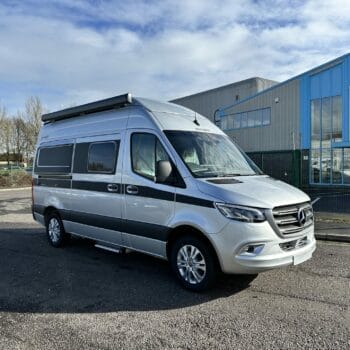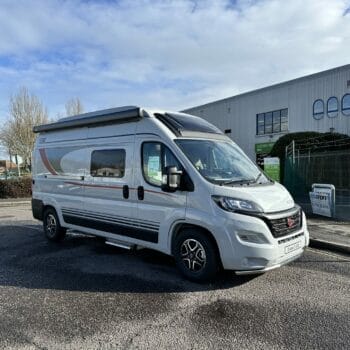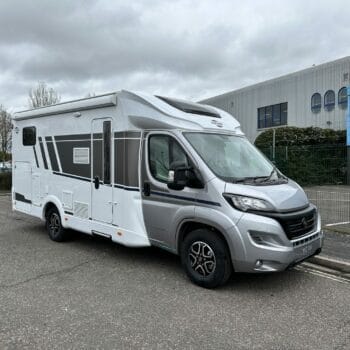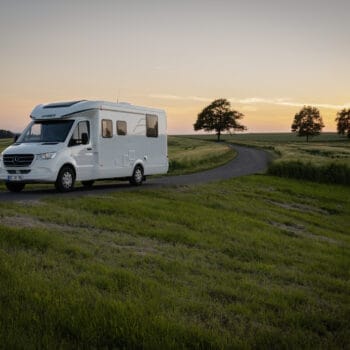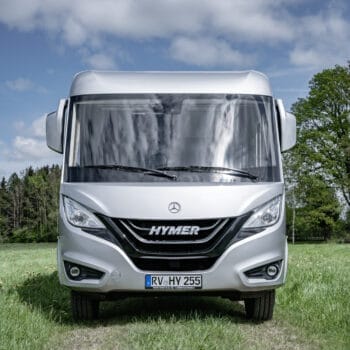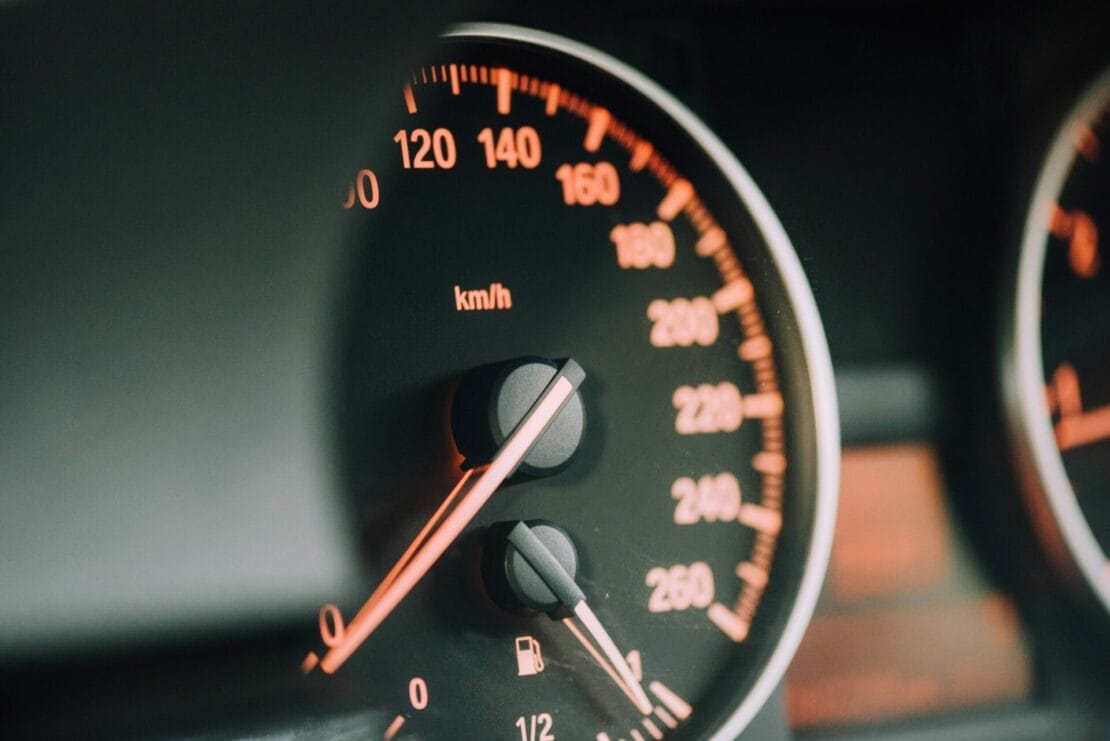Sometimes finding something on your motorhome is easier said than done. Here is some of the common places you will find what you’re looking for.
Where do I find my chassis number?
The location of the chassis number, also known as the Vehicle Identification Number (VIN), can vary depending on the make and model of the vehicle. However, there are common places where you can find the VIN on most motorhomes.
Driver’s Side Door: Inspect the edge of the door frame on the driver’s side. Some vehicles have the chassis number stamped on a plate in this area.
Driver’s Side Frame: Open the driver’s side door and inspect the area where the door latches to the vehicle frame.
Under the bonnet: Look for a metal plate or sticker on the engine block, radiator support, or other components under the bonnet.
Vehicle paperwork: Your chassis number is often printed onto any official vehicle paperwork.
Remember that the chassis number is a 17-character alphanumeric code that provides information about the vehicle’s make, model, year, country of manufacture, and other details. If you have trouble finding the chassis number in these common locations, refer to your vehicle’s owner’s manual for specific instructions or contact the manufacturer for assistance.
Where do I find my fuse box?
The location of the fuse box in a motorhome can vary depending on the make and model of the vehicle. However, there are some common places where you can typically find the fuse box in a motorhome.
Near the Driver’s Seat: Some motorhomes have the fuse box located near the driver’s seat, either on the floor or on the side panel. Check the area around the driver’s seat, including the side panels and the area beneath the driver’s seat.
In the Engine Compartment: In certain motorhome models, the fuse box may be located in the engine compartment. It is typically mounted on or near the firewall. Be cautious when working in the engine compartment, and consult your motorhome’s manual for specific instructions.
Inside Cabinets or Closets: In some cases, especially in smaller or older motorhomes, the fuse box might be located inside a cabinet or closet. Check storage areas near the driver’s seat or in the living quarters.
Always remember to turn off the power to the motorhome before accessing the fuse box, and exercise caution when handling electrical components. If you are unsure or uncomfortable with locating or dealing with the fuse box, it’s advisable to consult with a professional or contact the manufacturer for guidance.
Where do I find my frost protection valve?
The location of the frost protection valve in a motorhome can vary depending on the specific make and model of the vehicle, as well as the design of the plumbing system. However, here are some general guidelines that may help you locate the frost protection valve.
Water System Components: The frost protection valve is typically part of the motorhome’s water system. It may be installed in close proximity to other water-related components, such as the water pump, water heater, or water lines.
Water Heater Compartment: Check the compartment or area where your motorhome’s water heater is located. The frost protection valve is often connected to the water heater or located nearby to prevent freezing.
Service Compartment or Utility Bay: Many motorhomes have a service compartment or utility bay where various components, including plumbing-related ones, are grouped together. Look for the frost protection valve in this area.
Underneath the Motorhome: In some cases, the frost protection valve may be located underneath the motorhome. It could be installed in a protected area to prevent freezing.
Owner’s Manual: If you have the owner’s manual for your motorhome, it should provide information on the location of various components, including the frost protection valve. If you don’t have the manual, you may be able to find it online or contact the manufacturer for assistance.
If you’re still having trouble locating the frost protection valve or if you have specific questions about your motorhome’s plumbing system, it’s recommended to consult the owner’s manual or contact the manufacturer for guidance.
Where do I find my water pump?
The location of the water pump in a motorhome can vary depending on the specific make and model of the vehicle. However, there are some common places to look.
Under the Sink or Cabinet: Water pumps are often installed near the kitchen or bathroom areas, as these are the primary locations for water usage in a motorhome. Check under the sink or inside cabinets for the water pump.
Near the Water Heater: In some motorhomes, the water pump may be located close to the water heater. The water heater is usually situated in a cabinet or compartment, and the pump may be nearby.
Service Compartment: Many motorhomes have a service compartment or utility bay where various components, including the water pump, are located. This compartment is typically on the exterior of the motorhome.
Underneath the Motorhome: In some cases, the water pump might be located underneath the motorhome, especially if it’s a class C or class A motorhome. Look for a panel or access point underneath the vehicle.
Owner’s Manual: If you have the owner’s manual for your motorhome, it should provide information on the location of various components, including the water pump. If you don’t have the manual, you may be able to find it online or contact the manufacturer for assistance.
If you’re unable to locate the water pump or if you have specific questions about your motorhome’s setup, it’s advisable to consult the manufacturer’s documentation or contact the manufacturer directly for guidance.
Where do I find my engine battery?
The location of the engine battery in a motorhome can vary depending on the make and model of the vehicle, as well as the specific design of the motorhome. However, here are some common places to check:
Front Hood or Engine Compartment: In many motorhomes, especially those with a Class A or Class C design, the engine battery is located in the front hood or engine compartment. Open the hood and look for the battery compartment. The engine battery is usually mounted near the engine.
Under the Driver’s or Passenger’s Seat: Some motorhomes, especially Class B models, may have the engine battery located under the driver’s or passenger’s seat. Lift up the seat or remove a panel to access the battery.
Exterior Battery Compartment: Some motorhomes have an exterior compartment specifically designed for the engine battery. This compartment is often accessible from the outside of the RV, making it easy to check and maintain the battery.
Chassis Manufacturer’s Guidelines: Refer to the chassis manufacturer’s guidelines for your motorhome. The engine battery location is often in accordance with the chassis specifications. The chassis information may be available in the owner’s manual or documentation provided by the chassis manufacturer.
Owner’s Manual: The owner’s manual for your motorhome should contain information about the location of various components, including the engine battery. If you don’t have the manual, you may be able to find it online or contact the motorhome manufacturer for assistance.
If you’re unable to locate the engine battery or if you have specific questions about your motorhome’s setup, contact our service team directly.
Where do I find my leisure battery?
The location of the leisure battery in a motorhome can vary depending on the specific make and model of the vehicle, as well as the design of the electrical system. Here are some common places to check for the leisure battery in a motorhome.
Interior Storage Compartment: Many motorhomes have an interior storage compartment designated for house or leisure batteries. This compartment is often located in the living area, under a bench seat, in a closet, or another accessible area.
Under Seating or Bed: Leisure batteries are sometimes installed under seating areas or beds in the motorhome. Lift up cushions, mattresses, or panels to check if the battery is located underneath.
Exterior Battery Compartment: Some motorhomes have an exterior compartment designed specifically for leisure batteries. This compartment is often accessible from the outside of the motorhome, making it easy to check and maintain the battery.
Service Compartment or Utility Bay: Motorhomes may have a service compartment or utility bay that houses various components, including the leisure battery. Check this compartment for the presence of the battery.
Chassis Manufacturer’s Guidelines: Refer to the motorhome’s documentation, including the owner’s manual, for information on the location of the leisure battery. Additionally, check any guidelines provided by the chassis manufacturer, as the placement of the leisure battery may be in accordance with chassis specifications.
Electrical Control Panel Area: In some motorhomes, the electrical control panel, which includes switches and monitors for the house systems, may be located near the leisure battery. Check the area around the control panel for the presence of the battery.
If you’re unable to locate the leisure battery or if you have specific questions about your motorhome’s electrical system, contact our service team directly




